Sushi is a popular dish throughout the world because of its unique taste and refreshing qualities. Although I love making sushi, I thought that it would be nice to learn how to make kimbap for a change.
I was introduced to kimbap when my Korean ex-colleague made some and brought them to the team for an office gathering. When I had my first look at kimbap, I mistaken it for sushi. When I asked him what he has made, he replied – “It’s kimbap, the Korean version of a sushi.”
Kimbap is a popular picnic and snack food in Korea. I wonder why I didn’t know about it earlier!
My first bite of a kimbap was very inviting. I immediately got hooked on the dish as it tasted so delicious. My first attention was drawn towards the taste of the Korean pickled vegetables that were in the kimbap. I found them so appetizing and tempting!
That day was about 10 years ago! And I can’t believe I did not try to make that dish until now…
I’m sure many of you are wondering – what’s the difference between sushi and kimbap?
Well, the main difference is that in sushi, they use a lot of raw ingredients like raw salmon, tuna, cucumber and carrots. However, kimbap usually uses cooked ingredients for its filling like stir-fried beef, canned tuna and pickled vegetables. So if you are planning to prepare sushi for your friends and family at your next party but are afraid that they are not opened to eating raw fish, why not try making kimbap instead?
My first try at making kimbap was successful, though next time I’ll include a much thicker slice of the pickled radish to add more flavour to the dish. Although many recipes include sliced tenderloin beef for the kimbap filling, I opted to use minced beef instead to be more cost effective. Besides that, I used sushi rice and chose to season my rice with vinegar and use the sushi way of cooling and marinating the rice to make my kimbap. I’ve added sesame oil to the rice marinade as it is a classic marinade for kimbap.
If you’re looking forward to making kimbap but afraid of the rolling technique, don’t fret. I’ve specially produced a video documenting my step-by-step guide to rolling kimbap just for you!
Watch my video here:
Now that you know how to roll the kimbap, let’s get cooking!
Here’s my recipe:
KOREAN SUSHI (KIMBAP)
Ingredients:
7 pieces nori sheets
3 cups sushi rice
4 cups water
250g minced lean beef
1 large carrot, cut into matchsticks
1 bunch spinach, blanched
3-4 tbsp sesame seeds
7 strips yellow pickled radish
3 eggs, beaten
3 garlic cloves, minced
Soy sauce
Brown sugar, salt, black pepper and sesame oil to taste
1/3 cup white vinegar or more according to your preference
Method:
- Marinade the beef with soy sauce, 1 clove minced garlic, ¼ tsp ground black pepper, brown sugar and a dash of sesame oil. Set aside.
- Cook the rice with water in a rice cooker or saucepan. Once cooked, fluff up the rice and spread it in a shallow baking tray. Season with vinegar, sugar, salt and sesame oil to taste. Let the rice cool down by covering it with a damp cloth.
- Combine blanched spinach with the remaining garlic, a sprinkling of salt and a dash of sesame oil. Squeeze the liquid out from the spinach.
- Stir fry the carrots with some oil and a sprinkling of salt till slightly tender. Remove any access water from the carrots. Set aside.
- Heat a frying pan with some oil and cook the beaten eggs by spreading the eggs evenly in the pan till slightly browned. Cut the eggs into thin strips.
- Stir fry the beef until it is cooked. Set aside.
- Place the nori, shiny side down on a bamboo mat.
- Spread the cooked rice evenly on the bottom third of the nori sheet.
- Sprinkle rice with sesame seeds.
- Place the beef, carrots, pickled radish, egg strips and spinach in the center of the rice.
- Roll the kimbap with both hands and press firmly to ensure that the filling stays in a tight roll.
- Cut the kimbap into bit-sized pieces.
- Repeat the process until the remaining ingredients are finished.
- Serve immediately.
That’s it! Now you can eat your kimbap and share it with your family and friends.
Thinking of making kimbap but not a big fan of beef?
Get creative with your kimbap filling ingredients! I found a link that may help you to learn about the various types of kimbap in Korea. Use this as a guide and let your creativity run wild to create more tempting kimbap with found ingredients in your panty!
Your guide to famous kimbap in Korea:
http://www.dramafever.com/news/korean-food-12-different-varieties-of-kimbap/
Have you heard about kimbap before? Have you eaten it in a Korean restaurant? If not, will you like to try it if given the opportunity?
I’d be happy to know.
Till next time I wish you all the best in your cooking adventures.
Happy cooking!
Cheers,
Caroline Poh
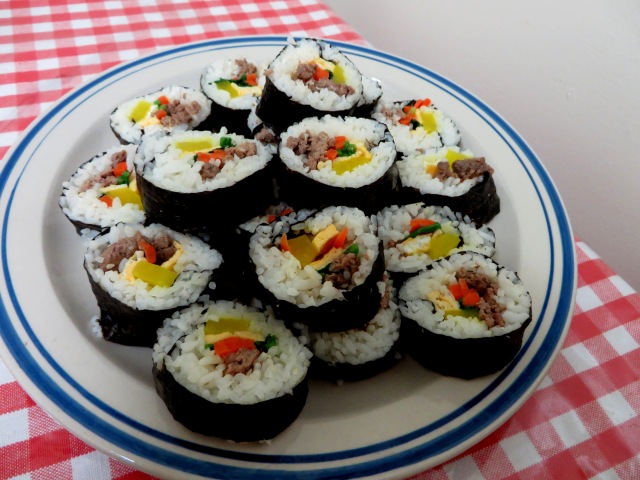
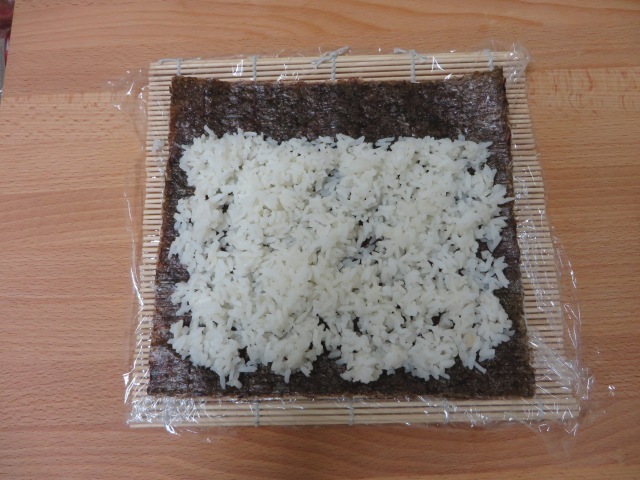
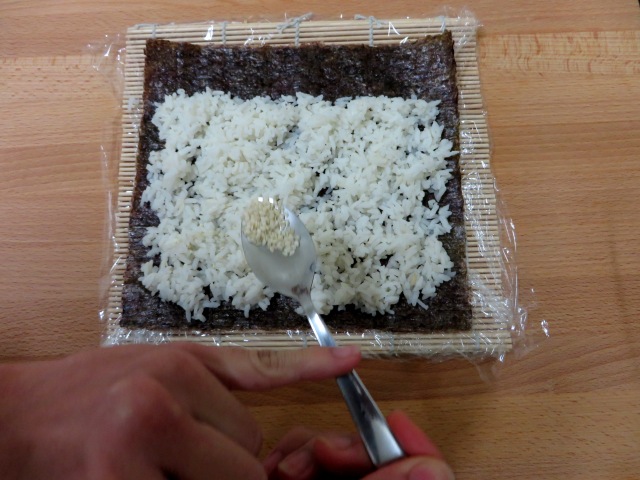

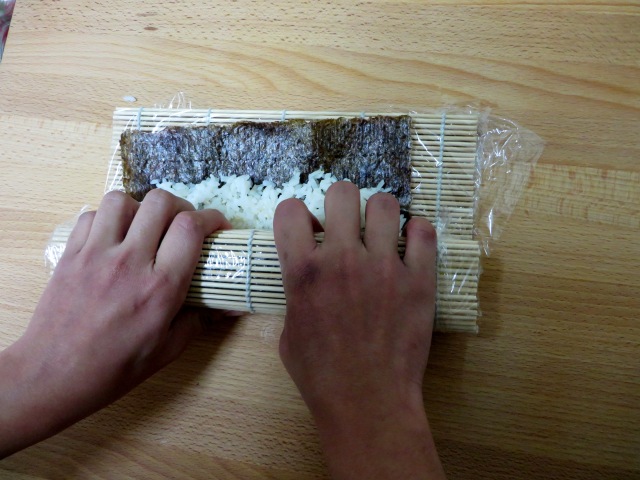
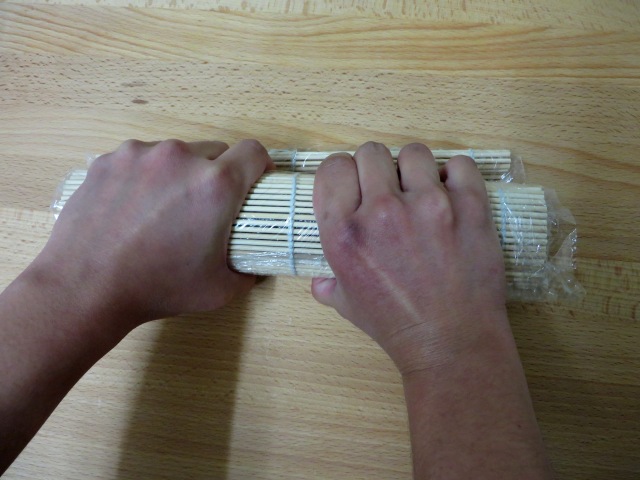
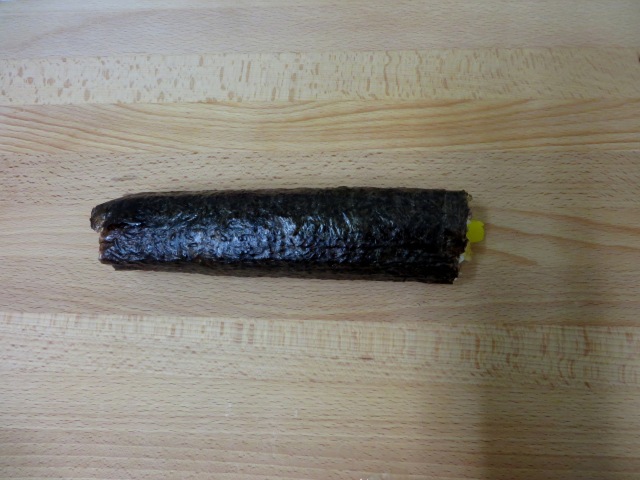
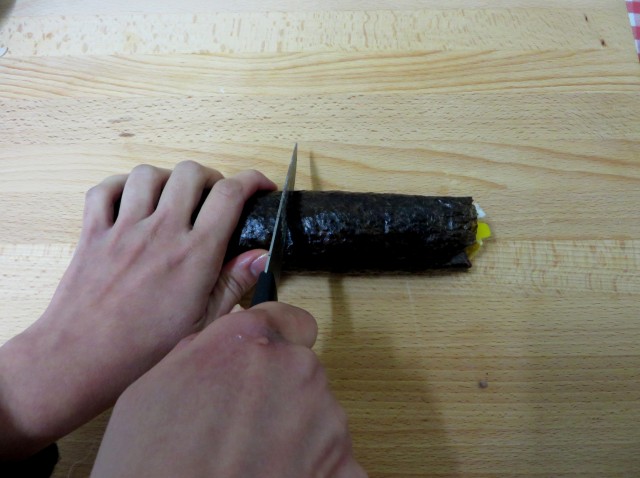
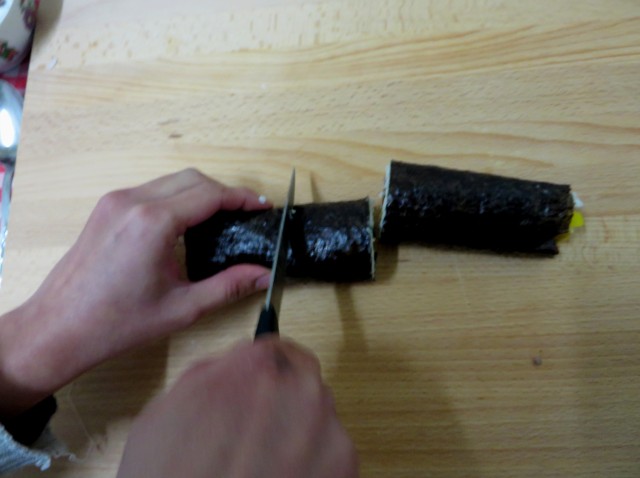
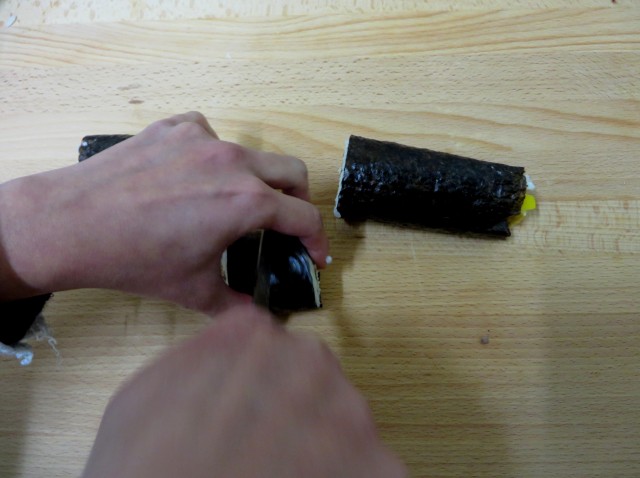
I love both sushi and kimbap. Your post just reminded me that I made kimbap before at my friends place. It was like 8 years ago! Good times 🙂
I think the good thing with kimbap is you can make it using normal white rice, not sushi rice. Correct me if I’m wrong!
LikeLike
From what I read kimbap can be made with many types of rice. The examples I found through my research was that they can be made with black rice, brown rice, and even other grains. So I think this may include normal white as well. 🙂
LikeLiked by 1 person
Yes we can meet over winter break so you can make me some haha
LikeLike
No problem. 🙂
LikeLike
Oh wow this looks really good! I am definitely trying this when i find the time… likely when the semester is finished.
LikeLike
Hi, Leah.
That’s great. I hope you’ll enjoy trying out the other kimbap flavours too after the semester to see which ones you like best.
I’ve included a link in article to a website that talks about all the different types of kimbap in Korea.
Happy cooking!
LikeLike
Woow, look so yummy, I like when you told how to do it as step by step. It’s easy to understand and can make it by myself. Thanks.
LikeLike
Hi, Sasi.
I’m happy you found my step-by-step guide useful. You can also check out my video on how to roll the kimbap to learn more about the rolling technique. 🙂
LikeLike
I’ve never heard of kimbap before but I feel as though I’ve tried it. I’ve certainly tried sushi with picked vegetables before! Would that be very similar?
LikeLike
Yes, that would be quite similar. But the pickle that is eaten with the japanese sushi is usually a pickled ginger. Kimbap uses pickled radish which is different. Though I do see a slice of pickled radish served in Japanese restaurants with their bento box meals. Maybe both japanese and koreans eat pickled radish – but in different ways.
LikeLiked by 1 person
I’m agree with Sasi, step by step instruction is really helpful though! 🙂 I never make a sushi by myself…. I started to eat sushi when I was in Malaysia!! 😀 my fav place was Sushi Zanmai! but here I can’t find any good place everywhere seems like fast food sushi place to me.. But I’m definitely use your tips & try to make one soon! 😛
LikeLike
Hi, Sepi.
I’m glad you found my step-by-step instructions really helpful. Let me know how your sushi turned out. 🙂
LikeLiked by 1 person
looks delicious – will have to try
LikeLike
Hi, Emily.
Thanks. Yes, you should try making this one day. 🙂
LikeLike
I love the video, and I love Tammy’s idea as well, haha. I think we all wish to try your wonderful cooking.
Kathy 🙂
LikeLike
Hi, Kathy.
Yea. Let’s all have a class party after the sem has ended! 🙂 Everyone can share one dish. I’ll make something yummy.
LikeLiked by 1 person
That’s great! Cooking is my talent……..#I am kidding# haha
Kathy 🙂
LikeLike
HI Carole, I Love Sushi and has been trying to find time to look at the recipes but havn’t had time. But m happy you share it here. Thank you..cheers
LikeLike
Hi, Tshering Dendup.
I’m happy I could share some recipes to you. Hope you’ll have the time to read and try them one day.
LikeLike
YUUUUMMM! Saved this! I’ve always been too scared to make my own now ill have to give it a try!
LikeLike
Hi, Madelyn.
That’s great! I’m happy I’ve inspired you to make this dish. It’s actually not that difficult once you mastered the rolling technique (see my video). Once you have made one batch, I’m sure you’ll want to keep on making them. 🙂
LikeLike
I really like this food. I remember first time I tried it when my cousin made them for me. you could write a cook book Carol, looking forward to see your next post
LikeLike
Hi, Michelle.
Thanks. Yes, maybe one day I should write a cookbook. It’ll probably be an e-book for the first edition. 🙂
LikeLiked by 1 person
Let us known, friends could be the first audiences.
LikeLike
You are absolutely, right, Michelle. I’ll let you all know once my first cookbook is done. 🙂 Wish me luck!
LikeLike
Amazing dish! I’ve never made sushi but after I watched your video, I really want to try. Hope it’s not too hard for me 🙂
LikeLike
Thanks, Don. I’m happy you enjoyed my video and look forward to making sushi after watching it. You should really try making sushi or kimbap. It’s not as difficult as many people imagine. It’s just some rice rolled up in your favourite fillings. Make sure to put just a thin layer of rice on the nori sheet and do not overcrowd the sushi with too much filling as it will make it difficult for you to roll it up. Let me know how your sushi making experiment goes and if you need any help! 🙂
LikeLiked by 1 person
Thank you so much i will give it a try 🙂
LikeLike